The Role of the Fairy Tree in Irish Culture: Symbolism and Traditions Explained
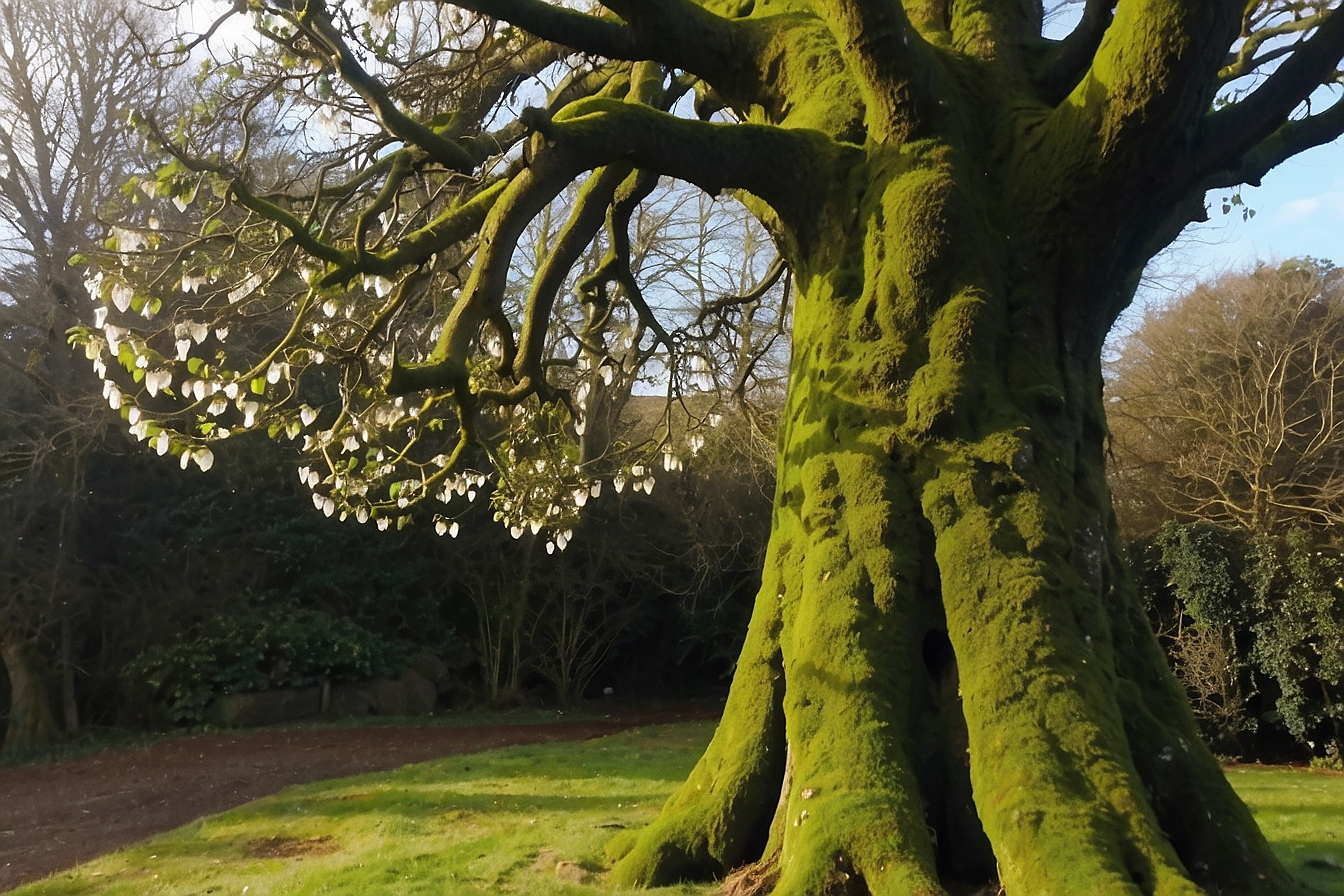
Updated On: April 24, 2024 by Shaimaa Olwan
The fairy tree in Irish culture holds a deeply rooted position. With an existence woven into the very landscape of the country, these trees are more than mere plants; they are imbued with a wealth of folklore and tradition. The mystical reverence for fairy trees stretches back through centuries, painting a picture of Ireland as a land where the veil between the mystical and the mundane is gossamer-thin. These are not simply elements of the natural environment but are seen as vital connections to the otherworldly, embodying Ireland’s unique relationship with its folklore and mythological past.

In Ireland’s lush countryside, these solitary hawthorn or ash trees are often found standing alone in fields or alongside ancient stone ruins. Recognisable by their gnarled branches and often decorated with ribbons and tokens, they mark places believed to be favoured by the ‘good folk’, the ‘wee folk’, or ‘fairies’. A deep respect for these trees reflects the enduring Irish belief in the importance of maintaining a harmonious relationship with the supernatural elements of the land. Acts of preservation or disturbance around these trees are treated with great care, for they are not simply flora; they encapsulate stories, superstitions, and the pivotal role of nature in Irish life.
Table of Contents
Historical Significance of the Fairy Tree in Irish Culture
The fairy trees of Ireland hold a profound place in Irish culture, serving as both spiritual symbols and focal points of ancient rituals. Their connection to Celtic folklore and the mystical marks them as cultural icons worth exploring.
Role in Ancient Ireland
In the tapestry of ancient Irish society, sacred trees were not mere plants but significant symbols deeply interwoven with the spiritual life of the Celts. Specifically, the hawthorn and ash tree were thought to house fairies and spirits, acting as portals to other worlds. The hawthorn, in particular, was often found standing alone in the countryside, earning a reputation as the ‘fairy tree’. Celts would not dare to harm or cut these trees, fearing bad luck or the wrath of the fairies believed to dwell within. The respect for these sacred trees is evident in their preservation across generations and the folklore shared across Ireland.
Druids and Sacred Trees
Our druid ancestors held trees in great veneration, regarding them as sources of wisdom and gateways to the otherworld. Druids were the learned priestly class in ancient Celtic cultures, and their reverence for nature is a well-documented aspect of their belief system. Sacred trees, particularly the ash and the aforementioned hawthorn, were central to their rituals and held significant positions in their cosmology, including the concept of the Celtic tree of life. These trees formed a core part of pagan practices pre-dating the Christian era, with the Tuatha Dé Danann, a semi-divine race in Irish mythology, often associated with sacred groves and trees. The druids’ practices would underscore the trees’ role in festivities, lawmaking, and even in deciding tribal kingship – all of which illustrate the inextricable link between sacred trees and the foundational aspects of Celtic society.
Cultural Beliefs and Superstitions
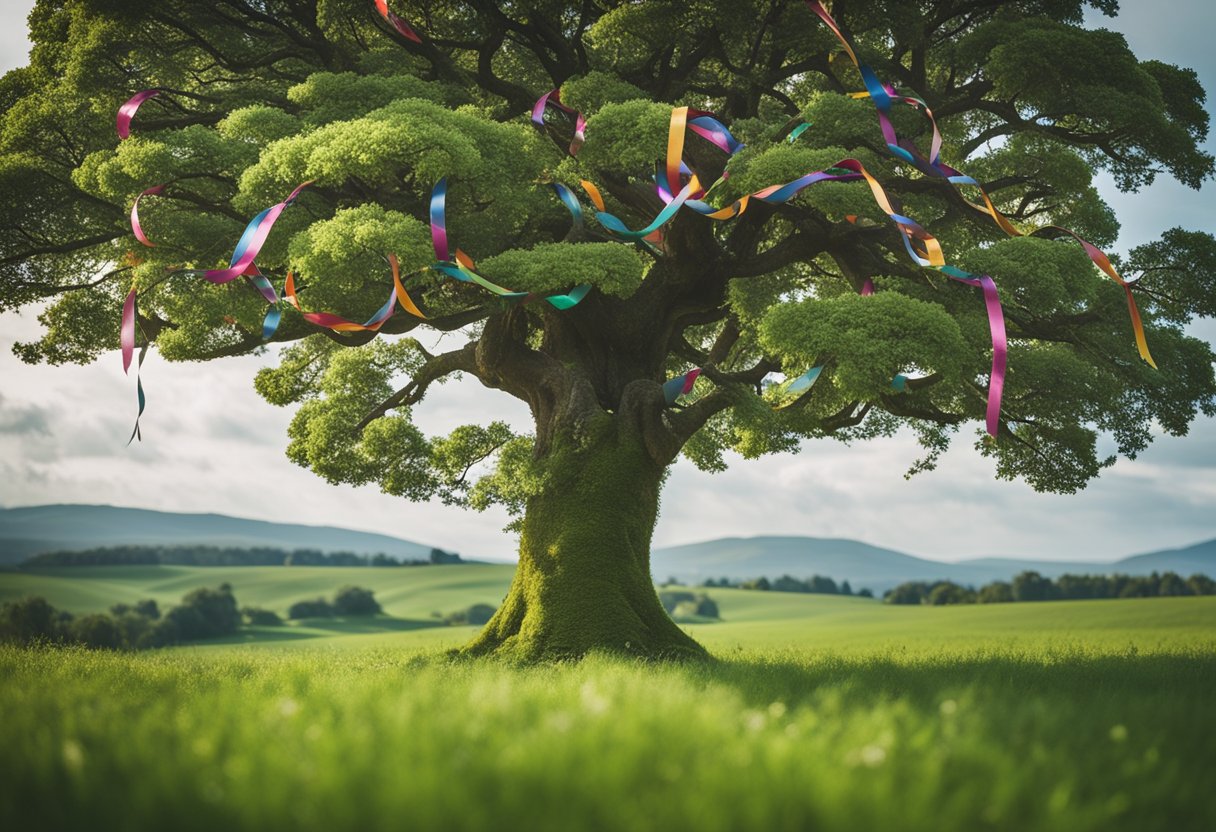
In Irish culture, fairy trees are not merely flora but hold a significant place woven with superstitions and a sense of respect that has been passed down through generations.
Fairy Trees and Luck
Fairy trees, particularly the hawthorn, are believed to be dwelling places of the aos sí or sidhe, the spirits akin to fairies. These entities in Ireland are not the whimsical characters of children’s storybooks but respected creatures that may bring fortune or misfortune. Planting a fairy tree is often seen as an action that brings good luck while preserving these trees on one’s land is thought to ensure continued prosperity and protection from the sidhe.
The Fear of Harming Fairy Trees
There is a deep-seated fear among some Irish people of cutting down or damaging these trees. Tales have been shared of bad luck befalling those who harm a fairy tree—ranging from mysterious illnesses to sudden misfortunes. Thus, to this day, there are instances where road construction and building developments have been altered to avoid disturbing these mystical trees.
Fairy Trees in Modern Times
Despite the influence of Christianity and the modern world on Irish tradition, reverence for fairy trees persists. They are often adorned with ribbons and offerings left by locals or visitors hoping to receive the favour of the sidhe or to partake in the cultural practice for its intrinsic value simply. This contemporary engagement with an ancient belief system is a testament to its resilience in the face of changing times.
Discover the intricate relationship between fairy trees and Irish folklore, where each tree tells a story that connects the present with the mysterious past.
Fairy Trees and Irish Mythology
In Irish culture, fairy trees are more than just a part of the landscape; they’re deeply enshrined in mythology, revered as portals to another world, and associated with various mythical creatures.
Legends and Stories
Fairy trees, often hawthorns, stand as solitary sentinels in the Irish countryside. These trees are traditionally believed to be gateways to the realm of the fairy folk, including beings like the leprechaun and the shapeshifting pooka. The legends tell us that disturbances to these trees can bring misfortune, as they’re seen as sacred to the wee folk or faeries. From the mythological cycle to modern tales, fairy trees are depicted as critical to maintaining the balance between our world and the mystical world of Irish mythology.
- Leprechaun: The crafty goldsmith of the fairy world, often associated with wealth and trickery.
- Pooka: A creature of Celtic folklore, known for its ability to shape-shift and for leading travellers astray.
- Fairy Folk/Wee Folk/Faeries: Ethereal beings with a close connection to nature and the land, often tied to ancient burial mounds and natural features.
These mythological beings are said to congregate around fairy trees, which are treated with great respect by those who believe in their powers. It’s not unusual for offerings to be left at these trees, which emphasises their importance in the intersection of the magical and the mortal realms.
Folklore and Storytelling

In Irish culture, the hawthorn tree and holy wells are often steeped in fairy lore, a testament to a rich tradition of stories passed down through generations. These narratives fuse the mystical with moral lessons, reflecting both the reverence for nature and the cultural importance of storytelling in Ireland.
Folklorists and their Work
Folklorists play a crucial role in Irish history, preserving the oral traditions that might otherwise be lost. It is through their meticulous work that the tales of fairies, holy wells, and folk medicine have remained an integral part of Irish folklore. They collect, study, and catalogue these stories, ensuring that the heritage they represent continues to inform and fascinate.
Eddie Lenihan’s Contributions
Eddie Lenihan, a renowned folklorist, stands out for his extensive contributions. As a custodian of Irish folklore, his efforts to document and share the tales associated with places like the hawthorn trees, considered to be the abode of fairies, help to maintain the cultural fabric of Ireland. His storytelling not only entertains but also deepens our understanding of Irish folklore and its place in modern Irish culture.
Nature’s Guardians: Hawthorn Trees
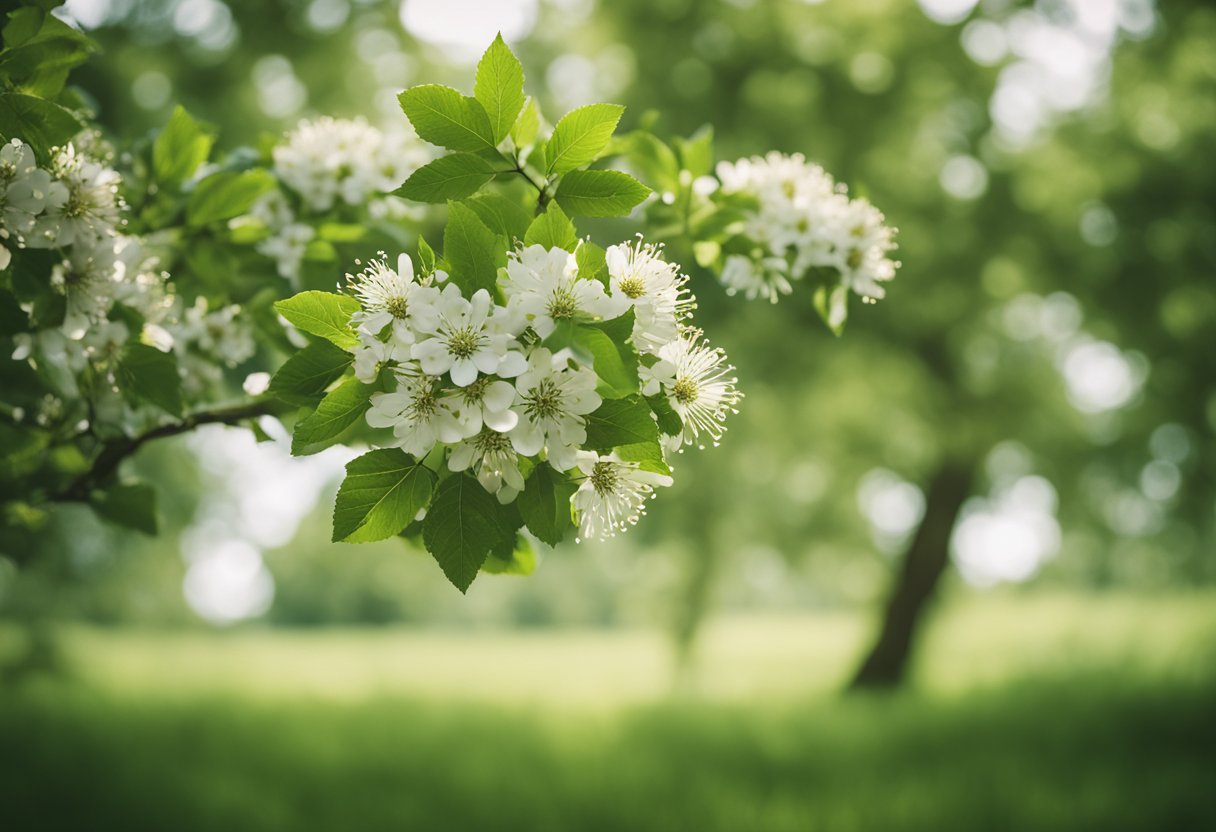
In Irish culture, the hawthorn tree plays a crucial role as a symbol of nature and spirituality. These trees aren’t simply part of the landscape; they’re deeply rooted in the environment and the traditions that protect them.
The Role in Nature and Environment
The hawthorn tree, often regarded as the “fairy tree”, is a vital component of the natural world. It’s more than a plant; it serves as a haven for wildlife and a keystone species in its habitat. Its dense thorny foliage offers shelter and nesting spaces for birds, while its flowers and fruits provide food for various insects and animals.
Care and Protection
Our approach to the care and protection of the hawthorn tree reflects the reverence we hold for nature itself. Traditionally, farmers have been reluctant to remove these trees, often regarded as the abode of nature spirits. This respect has helped ensure hawthorns remain scattered across the Irish landscape, serving as natural markers and connections to the past. Our continued protection of these sacred hawthorn trees recognises their role not just in ecology but as carriers of cultural and spiritual significance.
Cultural Practices Around Fairy Trees
In Irish culture, fairy trees are deeply woven into the fabric of local customs, associated with rituals, offerings, and the well-being of the land. These trees are often treated with reverence and play a significant role in ceremonies, especially in rural areas.
Rituals and Offerings
We often observe that fairy trees, particularly the hawthorn, are central to various rituals and the making of offerings. Tradition dictates that these trees are believed to house fairies or spirits and to provide a gateway to the otherworld. Offerings are made to incur blessings and good luck or to ask for favours from the fairies. It’s not uncommon to find items such as coins, ribbons, or pieces of cloth tied to the branches of a fairy tree as a form of votive offering, reflecting the harmonious relationship between humans and the subtle beings of nature.
Tree Dressing Traditions
Tree dressing is a prominent custom attached to the fairy tree. During Beltane, the beginning of the summer season, trees are adorned with colourful rags or other tokens. This tree dressing not only marks the festive season but is also a gesture of respect and a plea for good fortune in the coming year. The dressing of a fairy tree is done with care, keeping in mind that it should not harm the tree or disturb the fairy path that is often believed to run in its vicinity. As part of the custom, some use strips of cloth inscribed with Ogham, an ancient Celtic alphabet, linking the practice with Ireland’s rich linguistic heritage.
Fairy Trees in the Irish Landscape
The Irish countryside is woven with stories and beliefs that bring a mystical element to its green fields and ancient hills. Among these, fairy trees are potent symbols deeply rooted in the heart of Ireland’s spiritual geography.
Geographical Distribution
Fairy trees, known to dot the Irish landscape, are predominantly hawthorns or sometimes ash trees that stand alone in fields, often marking the site of a ring fort or fairy fort. They are found across the nation, from County Clare to Kildare, and form an integral component of rural myth. In Connacht, particularly in Sligo, these trees are treated with reverence, arising from a belief that they are the gathering places of the Sidhe, the fairy folk. The Hill of Tara in Meath, renowned as the seat of the High Kings of Ireland, is one such place where fairy trees are enveloped in legend and history.
Fairy Trees and Land Use
Throughout Ireland, and particularly in areas such as Belfast and County Clare, land use is often influenced by the presence of fairy trees. Landowners and farmers meticulously avoid disturbing these trees for fear of bad luck, displaying traditional respect for the ancient beliefs associated with these sites. The role of fairy trees in this context highlights a cultural understanding that transcends generations and continues to influence how the landscape is navigated and utilised. In modern times, even development projects have been altered to accommodate these solitary trees, attesting to the enduring role of fairy trees in Irish culture.
Interaction with Modern Development

In our exploration of the role of fairy trees in Irish culture, we pay particular attention to how these sacred trees engage with the demands of urbanisation and environmental advocacy.
Urban Expansion and Fairy Trees
As urban expansion continues to encroach upon natural and historical spaces, the fairy trees of Ireland emerge as poignant symbols of the cultural clash. In one notable instance, road works for a motorway bypass in County Clare were rerouted to preserve a fairy tree revered for its spiritual significance. Such actions highlight the respect still afforded to these entities, which some believe to be homes of deities or spirits.
However, it’s not just road works that grapple with these sacred sites. Industrial developments, like the time when a factory for the luxury car, the DeLorean, was to be set up, have also encountered the influence of fairy trees. It’s said that disturbing these trees can curse those involved with bad luck, making businesses and developers think twice before taking actions that could offend the mythical beings associated with these trees.
Environmental Campaigns
Our respect for these culturally significant trees can be seen through various environmental campaigns aimed at their preservation. Activists, often driven by a blend of ecological and cultural motivations, have staged campaigns to stop the destruction of fairy trees. These campaigns stress the importance of maintaining not just the environmental integrity of areas but also the cultural heritage that is symbolised by the fairy trees’ presence.
By taking such stands, communities manifest a contemporary mingling of ancient tradition with modern sensibilities. The campaigns act as a firm reminder of our reverence for the deep-rooted links between Irish identity and nature, urging modern development to proceed with a conscious regard for Ireland’s cultural and natural landscape.
Significance in Health and Wellbeing
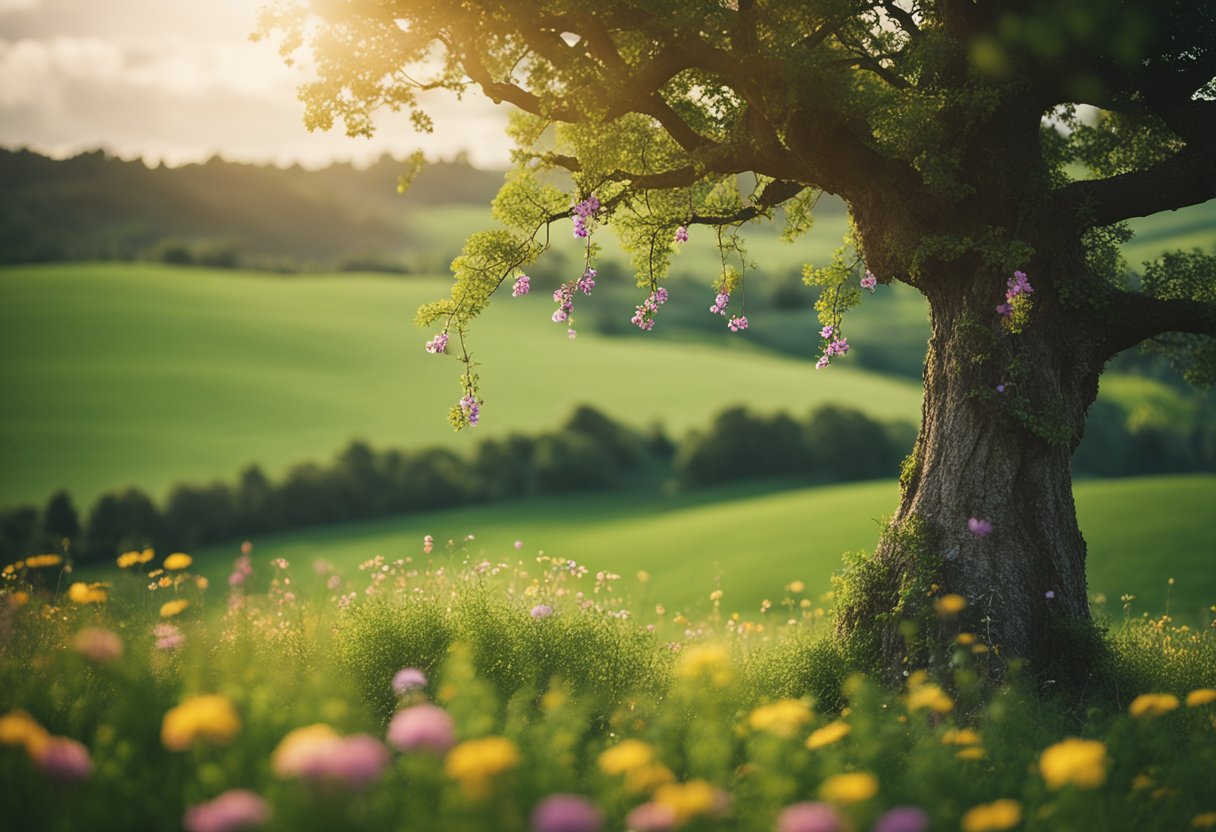
In the context of Irish culture, fairy trees, particularly Hawthorn trees, hold a special place in the practices of folk medicine and are associated with various health and spiritual benefits.
Medicinal Uses of Hawthorn Trees
Hawthorn trees have been revered in folk medicine for their medicinal properties. Traditionally, parts of the tree and fruit have been used to address cardiovascular conditions, particularly to regulate blood pressure. The leaves, berries, and flowers of Hawthorn are believed to contain compounds that promote heart health, and they may even possess diuretic properties that help reduce fluid buildup in the body.
Hawthorn Trees and Spirituality
Beyond their physical uses, Hawthorn trees are deeply interwoven with spirituality. Our ancestors often linked these trees with love and protection, and they were sometimes planted for blessings and prosperity. Hawthorn trees are not just plants with beneficial properties but also a source of spiritual healing. They represent a connection to the otherworld and are frequently found in honourable mention in places like Knockainy, known for its strong links with ancient traditions and the spirit world.
Fairy Trees in Arts and Symbols

In Irish culture, fairy trees hold a profound place beyond folklore, often surfacing as evocative motifs in various art forms and symbolising connections to the mystical fairy realm and sacred sites.
Fairy Trees as Motifs
We often see the depiction of fairy trees, such as the revered ash trees, in Celtic artworks, adorning tapestries, and illustrations. Artists infuse these motifs with a sense of enchantment and heritage that has been passed down through generations. In visual arts, the fairy tree may be represented with intricate roots and branches interweaving to form complex patterns, symbolising the intertwining of the physical and spiritual worlds.
Symbolism in Literature and Music
In the realms of literature and music, fairy trees are woven into narratives and compositions that echo Ireland’s rich traditions. They are odes to Irish fairy trees that serve as gateways to the otherworld, and the music often contains lilting rhythms that hint at the unseen presence of the fairy folk. The trees are not merely symbols but are celebrated as protectors of the land and the mystical beings residing therein. Our enduring fascination with these elements is reflected in both contemporary and classical Irish works that pay homage to the mystical nature of the fairy tree.
By incorporating the essence of fairy trees into the heart of Irish cultural expressions, we keep the magic of these ancient symbols alive, ensuring they continue to inspire our collective imagination and artistic creations.
Conservation and Future Perspectives
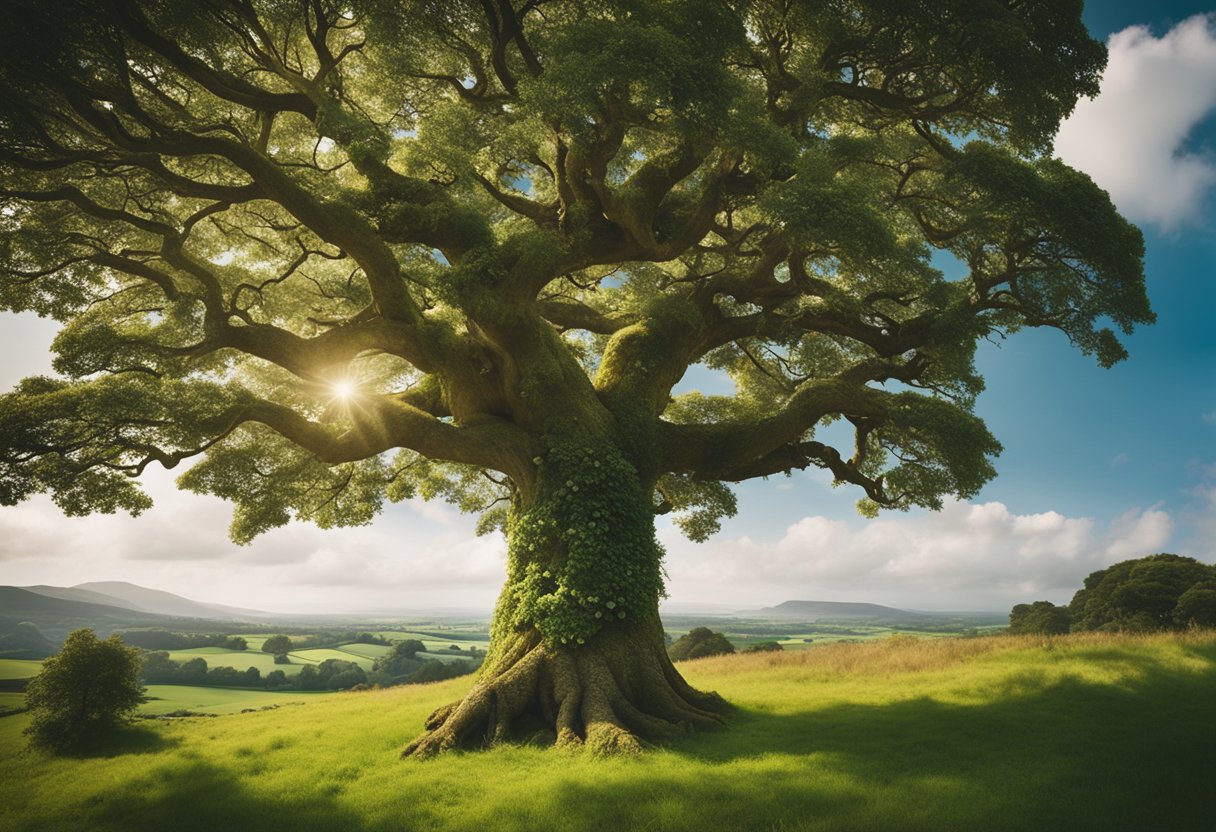
Key Observations: As we delve into the current efforts to safeguard Ireland’s fairy trees, it is paramount to recognise the pressing need for both the preservation of these sites and enhanced public education. These actions ensure the enduring legacy and respect for the sacred trees, pivotal to Irish heritage and the wider European landscape of nature conservation.
Preservation of Fairy Tree Sites
Our commitment to protecting fairy trees is at the heart of our conservation work. These sacred trees stand as bastions of biodiversity and cultural significance. In response, we have seen a careful integration of nature conservation practices with the respect owed to these significant entities. Careful management plans are implemented to avoid harm to the trees during land development and agricultural undertakings. The sacred trees that dot Ireland’s landscapes are not only conserved due to their ecological value but also because they are etched deeply into the cultural fabric of the country.
Education and Awareness
We understand that conservation is not complete without comprehensive educational efforts. Strategies have been designed to raise awareness about the cultural importance and natural wonders these fairy tree sites present. Through interactive workshops, educational programmes, and online resources, we impart knowledge on the importance of these sites to a wide audience. This empowerment through education fosters a communal sense of responsibility and care for preserving such integral parts of our heritage and nature.
Frequently Asked Questions
In this section, we address some of the most common queries people have regarding fairy trees and their place in Irish culture. We’ll touch on their significance, connections to folklore, and the practices associated with them.
What is the significance of fairy trees in Irish culture?
Fairy trees are deeply rooted in Irish mythology and are considered to be portals to the otherworld, acting as a bridge between the human and supernatural realms. Respect for these trees is still prevalent in modern Irish culture.
How are hawthorn trees connected to Irish fairy lore?
The hawthorn tree is often identified as a fairy tree in Ireland, believed to be inhabited or protected by fairies. Cutting down or damaging these trees is thought to bring bad luck or draw the ire of the fairies.
Could you recount a popular story involving a fairy tree in Ireland?
One popular tale speaks of a fairy tree in county Kildare, under which fairies would dance. It’s said that a farmer who cut the tree to expand his field was met with a string of misfortunes, highlighting the tree’s protected status in folklore.
Why are fairy trees often found undisturbed in Ireland?
Due to the cultural belief that fairy trees bring luck and help maintain a connection with the spirit world, they are often left undisturbed in the landscape. Many people still avoid harming these trees to not risk bad fortune.
What does the hawthorn tree symbolise within Irish traditions?
Within Irish traditions, the hawthorn tree symbolises the heart of the Otherworld, serving as a symbol of protection and spiritual connection. Its blossoming marks the start of summer.
What practices are associated with fairy trees in Ireland?
Various practices are tied to fairy trees, including leaving offerings like ribbons or coins to curry favour with the fairies. Individuals might also make wishes or say prayers near a fairy tree, hoping to receive the fairies’ blessings.






